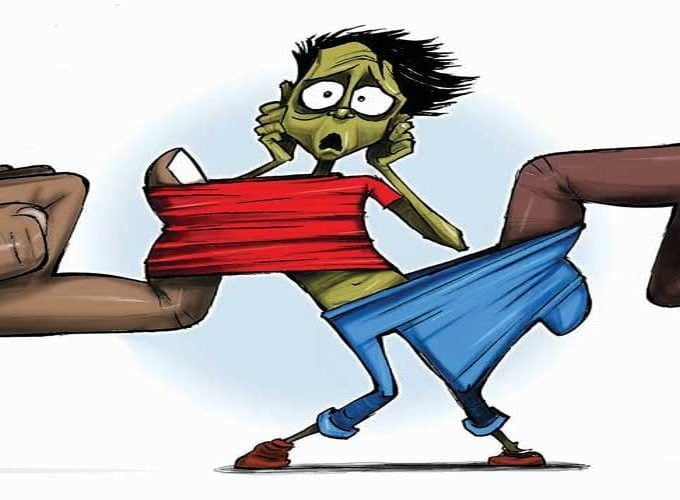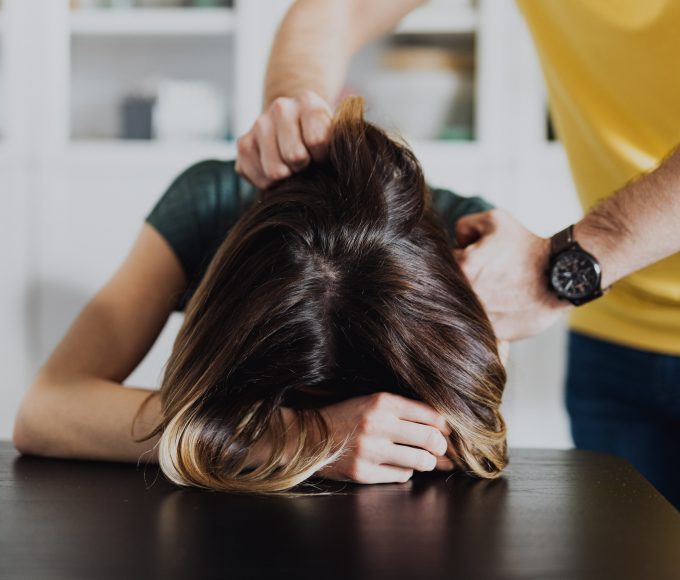Abstract: Sexual violence is a severe form of gender-based violence affecting millions worldwide. It is a global public health issue with significant short- and long-term physical and psychological effects on survivors. This blog post provides a comprehensive overview of the causes, products, and prevention strategies of sexual violence. We explore the various factors contributing to sexual violence, including individual, community, and societal factors. Additionally, we discuss the short- and long-term effects of sexual violence, such as physical injuries, mental health disorders, and social consequences. Finally, we explore the various prevention strategies that can help reduce sexual violence, including primary, secondary, and tertiary prevention.
Sexual violence
Sexual violence is a pervasive problem that affects millions of individuals worldwide. According to the World Health Organization (WHO), sexual violence refers to any sexual act or attempts to obtain a sexual act by violence or coercion, unwanted sexual comments or advances, or acts to traffic, or otherwise directed against a person’s sexuality using coercion, by any person regardless of their relationship to the victim, in any setting, including but not limited to home and work (WHO, 2020). Sexual violence is a complex issue that involves physical, emotional, and psychological harm. This article provides an overview of sexual violence, including its causes, types, and impacts.
Types of Sexual Violence
1. Rape
Definition of rape: Rape is a form of sexual violence in which someone forces or coerces another person into sexual activity without their consent.
Forms of rape: There are different forms of rape, including:
- Penetration without consent: This involves forced penetration of the victim’s mouth, vagina, or anus without consent.
- Drug or alcohol-facilitated rape occurs when someone uses drugs or alcohol to incapacitate their victim and then engages in sexual activity without their consent.
- Date rape happens when someone engages in sexual activity with someone they know without their consent.
Common myths about rape: Several myths about rape can prevent victims from seeking help or reporting the crime. These include:
- Rape only happens to women: Men and non-binary people can also be victims of rape.
- If someone doesn’t fight back, it wasn’t rape: Victims may freeze or dissociate during a sexual assault, which doesn’t mean they consent.
- Only strangers commit rape: Most rapes are committed by someone the victim knows.
- Reporting and legal consequences: Victims of rape should report the crime to the police, who will investigate the incident and gather evidence. In most countries, rape is a criminal offense punishable by imprisonment.
2. Sexual assault
Definition of sexual assault: Sexual assault is any unwanted sexual contact or behavior without the victim’s consent.
Forms of sexual assault: Sexual assault can take many forms, including:
- Unwanted touching can include groping, fondling, or kissing without the victim’s consent.
- Sexual harassment: This is a form of sexual assault that involves unwanted advances, comments, or behavior of a sexual nature.
- Exhibitionism is when someone exposes their genitals or performs sexual acts in front of another person without their consent.
Common myths about sexual assault: There are several myths about sexual assault, including:
- It’s not sexual assault if the victim didn’t say no: Sexual assault occurs when there is no consent, regardless of whether the victim said no.
- Men can’t be victims of sexual assault: Men and non-binary people can also be victims of sexual assault.
- Sexual assault only happens to people who dress provocatively or act promiscuously: Sexual assault can happen to anyone, regardless of how they dress or behave.
Reporting and legal consequences: Victims of sexual assault should report the crime to the police, who will investigate the incident and gather evidence. In most countries, sexual assault is a criminal offense punishable by imprisonment.
3. Child Sexual abuse
Definition of child sexual abuse: Child sexual abuse is any sexual activity involving a child without their consent.
Forms of child sexual abuse: Child sexual abuse can take many forms, including:
- Fondling or touching a child’s genitals.
- Sexual intercourse with a child.
- Exposing a child to pornography.
Common myths about child sexual abuse: There are several myths about child sexual abuse, including:
- Child sexual abuse only happens in poor or dysfunctional families: Child sexual abuse can happen in any family, regardless of socioeconomic status or family structure.
- Children lie about sexual abuse: Most children do not lie about being sexually abused.
- Only men commit child sexual abuse: Women can also be perpetrators of child sexual abuse.
Reporting and legal consequences: Child sexual abuse is a serious crime, and victims should report it to the authorities. In most countries, child sexual abuse is a criminal offense punishable by imprisonment.
4. Sexual harassment
Definition of sexual harassment: Sexual harassment is any unwanted behavior of a sexual nature that creates a hostile or intimidating environment.
Forms of sexual harassment: Sexual harassment can take many forms, including:
- Unwanted touching or group Those who try to touch on any pretext or wrong part.
- Sexual comments or jokes that are inappropriate or offensive.
- Displaying sexually explicit materials, such as pornography, in the workplace.
Common myths about sexual harassment: There are several myths about sexual harassment, including:
- It’s only sexual harassment if the victim explicitly says no: Sexual harassment can occur even if the victim doesn’t say no, as long as the behavior is unwanted.
- Only women can be victims of sexual harassment: Men and non-binary people can also be victims of sexual harassment.
- It’s not sexual harassment if the behavior is intended as a joke: It can still be considered sexual harassment if it creates a hostile or intimidating environment.
Reporting and legal consequences: Victims of sexual harassment should report the behavior to their employer or supervisor. In many countries, sexual harassment is illegal and can result in disciplinary action, including termination of employment and even criminal charges. Victims need to know their rights and seek legal assistance if necessary.
Causes of Sexual Violence
1. Cultural factors
- Gender norms and stereotypes: Gender norms and stereotypes reinforce the idea that men should be dominant and aggressive while women should be passive and submissive. These stereotypes can lead to a belief that men are entitled to women’s bodies, leading to sexual violence.
- Objectification and commodification of women’s bodies: When women are seen as objects or commodities, their bodies become dehumanized, making it easier for perpetrators to commit sexual violence.
- Rape culture and normalization of sexual violence: In a rape culture, sexual violence is normalized and even celebrated. This can create an environment where perpetrators feel justified in committing sexual violence.
- Cultural attitudes towards sexuality: Cultural attitudes towards sexuality can also contribute to sexual violence. For example, cultures that promote abstinence-only sex education may create a climate where sexual activity is stigmatized, leading to a lack of knowledge and understanding about consent and healthy sexual relationships.
2. Psychological factors
- Trauma and PTSD: Many survivors of sexual violence have experienced trauma, which can lead to PTSD and other mental health issues. This can make it difficult for survivors to cope with the aftermath of sexual violence.
- Substance abuse and addiction: Substance abuse and addiction can increase the risk of sexual violence as a perpetrator and a victim.
- Mental health issues: Mental health issues, such as depression and anxiety, can also increase the risk of sexual violence.
3. Social factors
- Power imbalances and abuse of authority: Power imbalances, such as those between an employer and employee or a teacher and student, can create an environment where sexual violence is more likely to occur.
- Peer and group dynamics: Peer and group dynamics can also contribute to sexual violence. For example, in situations where a group of friends or colleagues may be pressured to conform to certain behaviors, including sexual violence.
- Socialization and upbringing: Socialization and upbringing can also play a role in sexual violence. For example, children who witness or experience violence may be more likely to engage in violent behavior than adults.
- Poverty and social inequality: Poverty and social inequality can create a climate where sexual violence is more likely. For example, impoverished individuals may be more vulnerable to sexual violence because they lack access to resources and support.
4. Environmental factors
- War and conflict: Sexual violence is often used as a weapon of war by military personnel and armed groups.
- Disasters and emergencies: Disasters and emergencies can also increase the risk of sexual violence, particularly for women and children who may be displaced or living in refugee camps.
- Migration and displacement: Individuals displaced or forced to migrate may also be at an increased risk of sexual violence.
- Access to weapons and other forms of violence: Access to guns and other forms of violence can also increase the risk of sexual violence, particularly in situations where there is a power imbalance or where individuals seek to exert control over others.
Impact of Sexual Violence
1. Physical impact
- Injuries and health complications: Sexual violence can lead to physical injuries, such as bruises, cuts, broken bones, and internal injuries. These injuries can range from mild to severe and may require medical attention.
- Sexually transmitted infections (STIs) and HIV/AIDS: Sexual violence can increase the risk of contracting STIs and HIV/AIDS. The perpetrator may have an STI or HIV/AIDS and transmit it to the victim during the assault.
- Pregnancy and reproductive health: Sexual violence can result in unintended pregnancy, leading to complications during childbirth and postpartum. Sexual violence can also damage reproductive organs and affect the victim’s ability to have children in the future.
2. Emotional impact
- Shame, guilt, and self-blame: Victims of sexual violence may feel shame, guilt, and self-blame for what happened to them. They may feel like they are responsible for the assault and may blame themselves for not preventing it.
- Anxiety and depression: Sexual violence can lead to anxiety and depression, affecting the victim’s ability to function in their daily lives. They may experience feelings of hopelessness, worthlessness, and despair.
- Fear and PTSD: Victims of sexual violence may experience fear and post-traumatic stress disorder (PTSD). They may have flashbacks of the assault, feel on edge or easily startled, and avoid situations that remind them of the assault.
- Substance abuse and addiction: Victims of sexual violence may turn to alcohol or drugs to cope with the emotional pain of the assault.
3. Psychological impact
- Trust and relationship issues: Sexual violence can lead to trust issues and affect the victim’s ability to form relationships. They may have difficulty trusting others and hesitate to form intimate relationships.
- Body image and self-esteem: Sexual violence can affect the victim’s body image and self-esteem. They may feel ashamed of their body and have negative feelings about themselves.
- Identity and sense of self: Sexual violence can affect the victim’s identity and self. They may feel like their identity has been taken away and struggle to find their sense of self.
- Suicidal thoughts and behavior: Sexual violence can increase the risk of suicidal thoughts and behavior. Victims may feel like there is no hope for their future and contemplate suicide.
5. Social Impact
- Stigmatization and discrimination: Victims of sexual violence may be stigmatized and discriminated against by society. They may be blamed for the assault and may face negative attitudes and behaviors from others.
- Isolation and withdrawal: Sexual violence can lead to isolation and withdrawal from social situations. Victims may feel like they are not safe in social cases and may avoid them altogether.
- Interpersonal and community conflicts: Sexual violence can lead to interpersonal and community disputes. Victims may feel like they are not being heard or supported by others, leading to conflict.
- Economic and financial consequences: Sexual violence can have economic and financial implications for the victim. They may have to miss work or school, may require medical attention, and may need to pay for therapy or other support services.
Treatment of Sexual Violence Victims
1. Medical treatment
- Emergency medical care: Victims of sexual violence may require emergency medical care for any life-threatening injuries or immediate medical needs.
- Forensic examinations and evidence collection: Forensic investigations are essential to collect physical evidence for legal proceedings. This includes DNA evidence, photographs of injuries, and swabs for STI testing.
- Treatment for physical injuries: Sexual violence can result in physical injuries that require medical attention, such as bruises, cuts, or broken bones.
- Preventive measures for STIs and pregnancy: Victims of sexual violence may be at risk of contracting sexually transmitted infections (STIs) or becoming pregnant. Preventive measures such as prophylactic medication or emergency contraception should be offered.
2. Legal aid
- Reporting sexual violence: Victims need to report sexual violence to the authorities. This can be a complex process, but it is necessary for holding perpetrators accountable and seeking justice.
- Accessing legal aid and support: Legal aid can inform victims about their rights and options for seeking justice. This includes assistance with obtaining restraining orders, filing police reports, and navigating the criminal justice system.
- Participating in legal proceedings: Victims may be required to participate in legal proceedings such as court hearings or depositions. Legal aid can help victims understand what to expect and provide support throughout the process.
- Advocating for victims’ rights: Legal aid can also assist victims in advocating for their rights, such as the right to be treated with dignity and respect, the right to have their voice heard in court, and the right to receive compensation for damages.
3. Psychological therapy
- Trauma-focused therapy: Trauma-focused therapy is a type of therapy that helps individuals process traumatic experiences. This may include exposure therapy, cognitive processing therapy, or prolonged exposure therapy.
- Cognitive-behavioral therapy: Cognitive-behavioral therapy is a type of therapy that helps individuals identify and change negative thought patterns and behaviors.
- Eye Movement Desensitization and Reprocessing (EMDR): EMDR is a type of therapy that uses eye movements to help individuals process traumatic experiences.
- Alternative and complementary therapies: Alternative and complementary therapies such as yoga, mindfulness, and art therapy can also help promote relaxation and self-care.
4. Support groups
- Peer support and counseling: Support groups can provide victims with peer support and counseling to help them process their experiences and cope with the aftermath of sexual violence.
- Advocacy and empowerment: Support groups can also help victims feel empowered by providing information on their rights and options for seeking justice.
- Creating a safe space: Support groups provide a safe and supportive environment for victims to connect with others who have had similar experiences.
- Building community and solidarity: Support groups can help victims feel less isolated and more connected to their community by building solidarity and promoting a sense of belonging.
Conclusion
1. Recap of main points
- Sexual violence is a pervasive problem that affects individuals, communities, and societies worldwide.
- Sexual violence takes many forms, including rape, sexual assault, child sexual abuse, and sexual harassment.
- Cultural, psychological, social, and environmental factors contribute to the occurrence of sexual violence.
- Sexual violence has severe physical, emotional, psychological, and social impacts on victims.
- Prevention of sexual violence requires education and awareness, legislative measures, advocacy, and counseling and support.
- Treatment of sexual violence victims involves the medical treatment, legal aid, psychological therapy, and support groups.
2. Call to action
- We must all take responsibility for preventing and addressing sexual violence in our communities and beyond.
- We can educate others about healthy relationships, consent, and sexual violence prevention.
- We can advocate for legislative measures that protect victims’ rights and hold perpetrators accountable.
- We can support survivors of sexual violence by providing compassionate care and empowering them to seek justice and healing.
3. prospects
- While sexual violence remains a significant public health issue, progress has been made in prevention, treatment, and advocacy efforts.
- Continued research, innovation, and collaboration are needed to advance our understanding of sexual violence and its impacts.
- Together, we can create a safer, more equitable world for all individuals, free from sexual violence and its consequences.
Last Worded From Author
I hope this blog article comprehensively explains sexual violence, its types, causes, impact, prevention, and treatment. It is essential to raise awareness and take action to prevent and reduce sexual violence in our communities. Let us work together to create a safe and supportive environment for all individuals.
FAQ
Sexual violence is any non-consensual sexual activity through force, coercion, or manipulation. It includes rape, sexual assault, child sexual abuse, and sexual harassment.
The causes of sexual violence can be complex and multifaceted. They may include cultural, psychological, social, and environmental factors.
Sexual violence can have severe and long-lasting effects on the victim’s physical, emotional, psychological, and social well-being. These effects may vary depending on the type and severity of the abuse.
Preventing sexual violence requires a multifaceted approach that includes education and awareness, legislative measures, advocacy, counseling, and support for victims.
There are numerous resources available for victims of sexual violence, including hotlines, counseling services, legal aid, and support groups. Victims need to seek help and support as soon as possible.
Reference
Effects of Sexual Violence. (n.d.). Rape, Abuse & Incest National Network. Retrieved from https://www.rainn.org/effects-sexual-violence
Also Read







